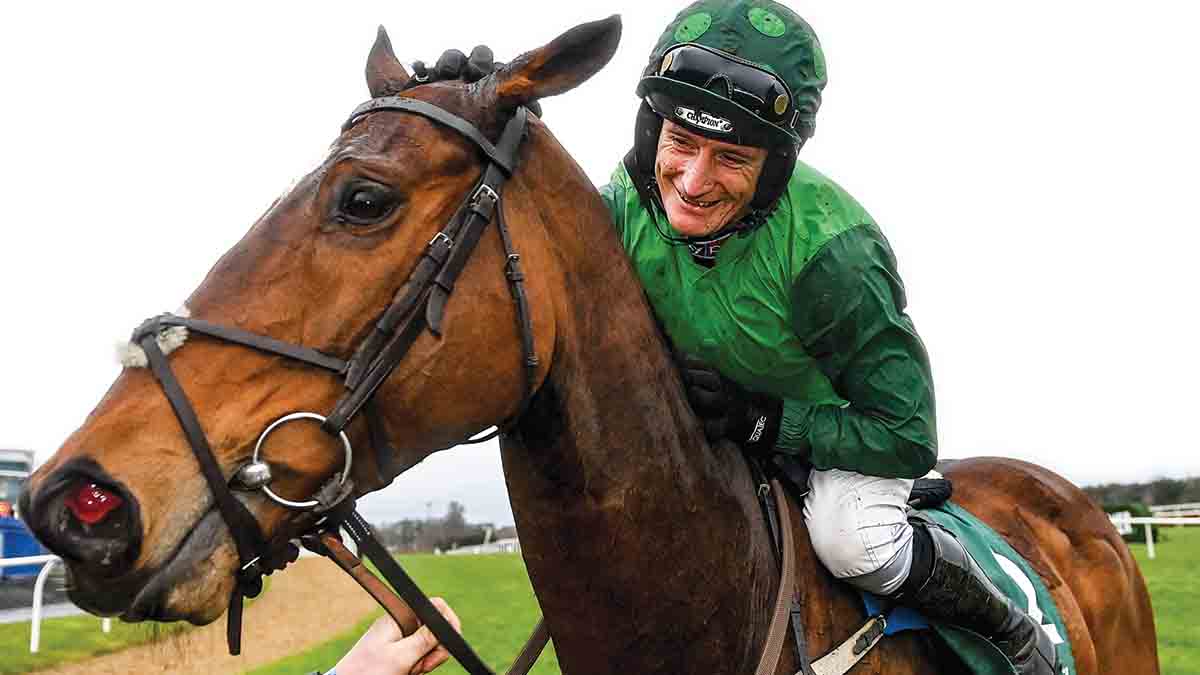BY EOIN EVERARD
How physically fit must you be to ride a horse? Many an armchair analyst has lamented that a rider wasn’t stronger over the final furlong or blamed the jockey when they see their horse fall at the last.
But having enough core strength to be able to balance on a horse for one or more minutes, manage several tonnes of horse power using only your hands, legs, reins, and a whip, then have the necessary strength and stamina to urge the horse forward in the closing phases requires a great degree of physical fitness. Add on top of that that most jockeys will have to repeat this trick up to seven times in the day and you can see it is a big undertaking.
In order to qualify as a jockey you must first pass a series of rigorous fitness tests. These tests include aerobic fitness tests, such as the beep test, core plank holds (4 minutes is considered 100%), undertaking race-riding conditions on a simulator for again 4 minutes, and doing muscular holds for your arms and legs such as squats and press ups.
Dr Sarah Jane Cullen, is a Lecturer in Sport & Exercise Science in SETU Waterford and coordinates the jockey research programme in conjunction with The Irish Horseracing Regulatory Board. She outlines the type of fitness that is needed to be a jockey. “Race riding requires a significant isometric (holding) muscle contraction, primarily in the quadriceps, deltoids, and forearms, with significant support from the core, back, and glute (bum) muscles.
Cullen refers to the pushing and shoving that takes place at the finish line of a race as “rigorous high-intensity pushing,” and jockeys need to have sufficient explosive muscle to force their mount across the finish line. Cullen would recommend jockeys running 10 x 30 second hill sprints which will help with the (anaerobic) sprinting fitness that is required at the end of a race.
Weight Management
Obviously, weight management is a massive element to being a jockey. This is something every jockey understands from an early age, but they have not been educated on how to do this in a safe and sustainable way. Educating jockeys about how to manage their weight has been a large focus on the Irish HRC in recent years.
Learning to fall.
An unfortunate part of the job of being a jockey is that falls happen. The Injured Jockeys Fund have been conducting research examining the link between fitness levels and consequence of falling. Research is currently ongoing, but the theory is that having stronger legs and learning how to fall with correct technique may allow jockeys to automatically use these skills and protect themselves when this occupational hazard arrives. Of course, not all injuries are avoidable but the Injured Jockey’s Fund hope that this may help reduce injuries to a certain extent.
Jockey’s Perspective
Riders undergoing some of this cutting-edge sports sciences have commented on the benefits of it. One jockey we talked to discussed how being physically fit improves his mental concentration. “The fitter you are the less tired you are throughout a race and the day, the better decisions you make. The fitter you get, the slower things seem to happen. I have found that whereas I might have gotten tired in the later races or towards the last furlongs I am now thinking clearer like I do at the start of the racing day”. Of course the main thing that gets you better as a jockey is riding horses. However, it is important to look at all aspects that can improve your performance.
So hopefully that gives you a little insight into the fitness of the jockeys you will be watching on your day out. As you are cheering on your horse at this year’s Goffs Thyestes Chase please spare a thought for the jockeys riding that horse and what they have to do to get into their best shape possible.





















